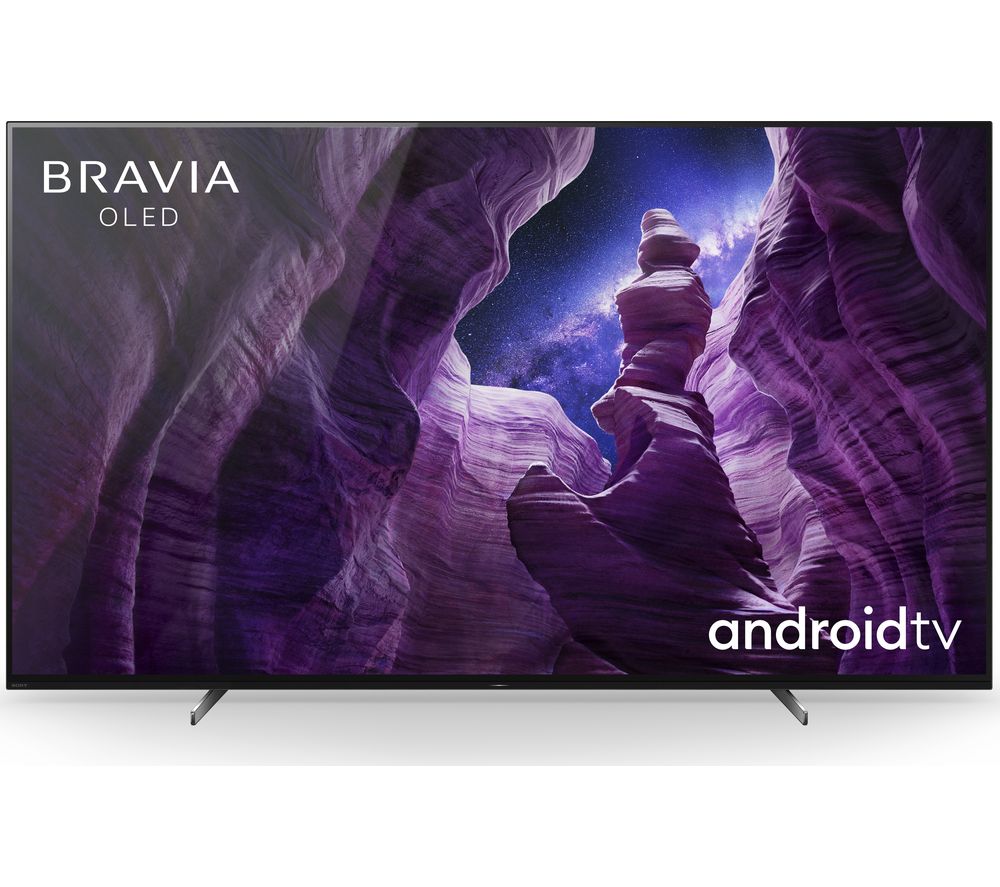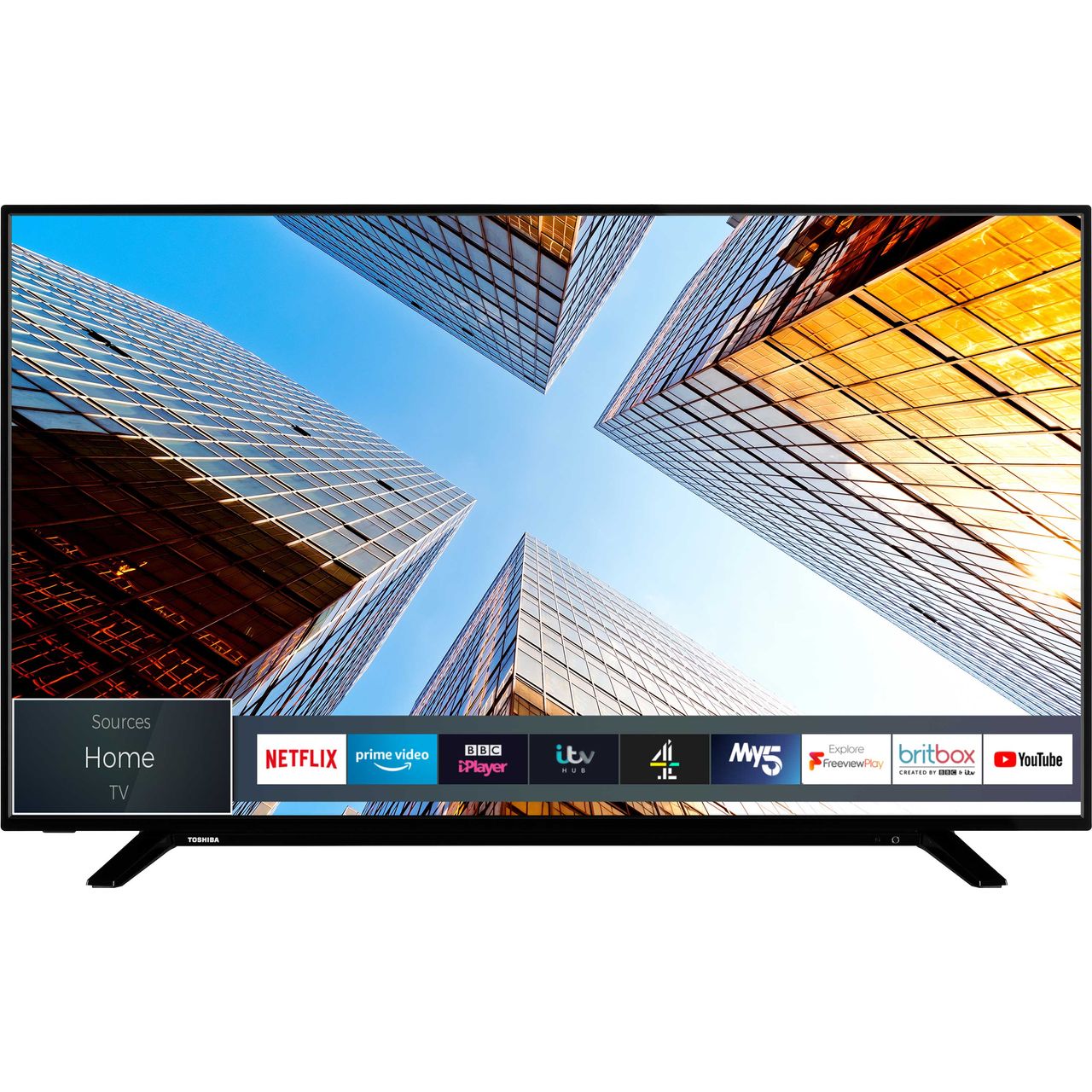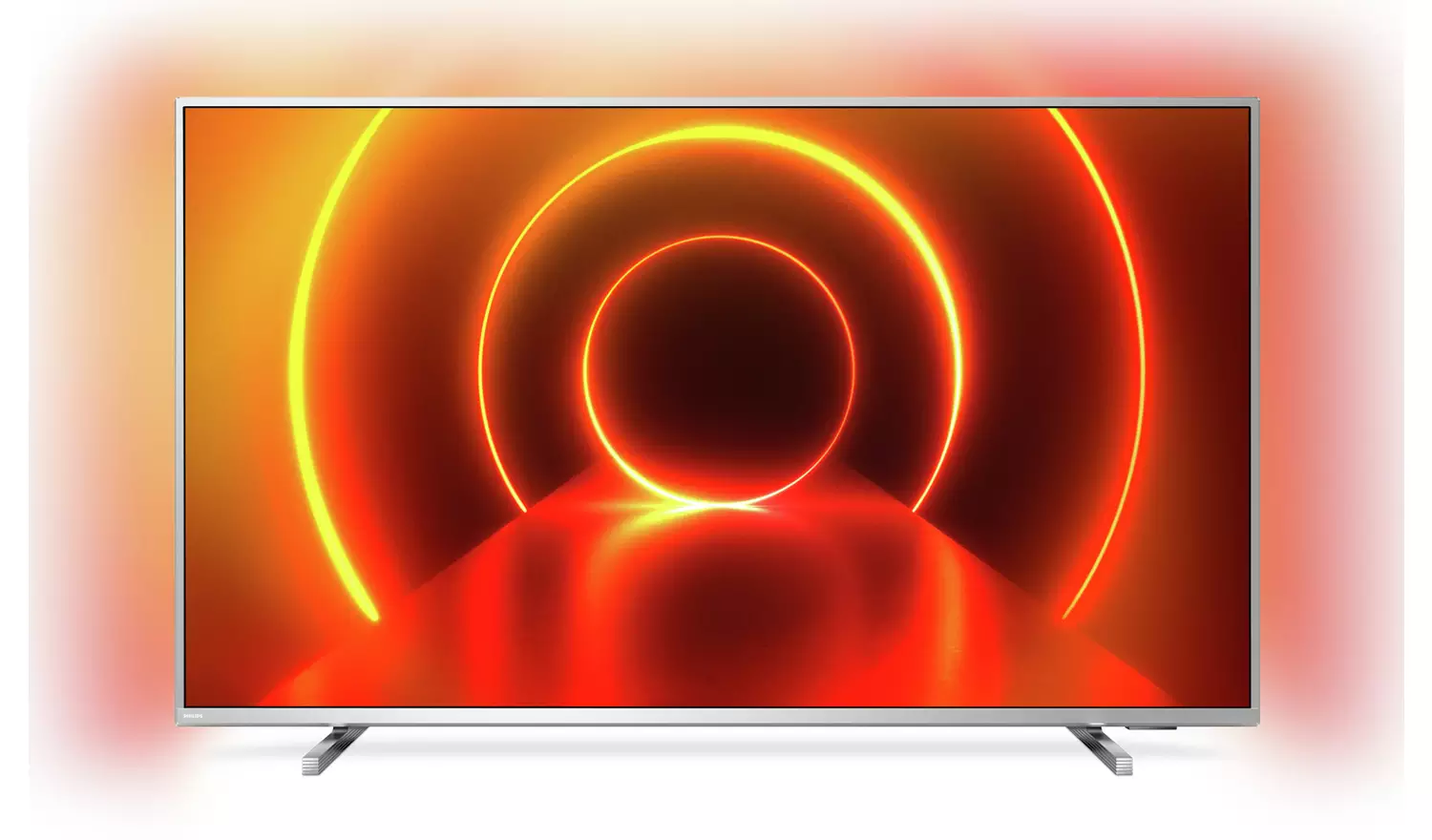SONY BRAVIA KD55A85BU 55″ Smart 4K Ultra HD HDR OLED TV with Google Assistant
X1 Ultimate Processor for ultra-detailed pictures. Sound from the screen with Acoustic Surface Audio. HDR: Dolby Vision / HDR10 / Hybrid Log-Gamma (HLG). Catch-up TV & 4K streaming. Freeview HD with YouView.
Discover just how intense dramas can be with the Sony BRAVIA KD55A85BU 55″ Smart 4K Ultra HD HDR OLED TV. Only with OLED do you get the true blacks, shadows, and colours the creator wanted you to see. Each pixel is individually controlled rather than lit from the sides, so there’s no haze – you’ll really see the difference during those Planet Earth documentaries.
At the heart of the A85 is Sony’s X1 Ultimate Processor. Everything is enhanced – you get incredible contrast, true-to-life colour, and exceptional viewing angles.
Made for action
Frantic football matches, fast-paced films, speedy video games – whatever’s on your TV you want it to run smoothly. The KD-55A85 makes sure your picture doesn’t skip a beat thanks to X-Motion Clarity tech behind the screen.
The screen is the speaker
Sound and picture are brought together in perfect harmony with Sony’s Acoustic Surface Audio. It’s pretty unique – the sound comes directly from where the action is happening on screen, making your entertainment more immersive than ever.
Smart TV
Dim the lights, search for a romantic movie on Netflix, and check how long your pizza takeaway will be – all without lifting a finger. With Google Assistant built-in, all you need to do is ask.
Netflix, Prime Video, Disney+ – you can watch all your favourites directly on your TV with a press of a button. And don’t forget you’ve still got BBC iPlayer, ITV Hub, All 4 and the rest to catch up with – it’s even easier to find the shows you’ve missed by scrolling back through the YouView TV guide.
Additional information
| Dimensions | – TV with stand: 739 x 1227 x 295 mm (H x W x D) |
|---|---|
| Weight | – TV: 16.8 kg |
| Guarantee | 5 years |
4K, 4-K or 4k may refer to:
- 4000 (number)
- Four kibibytes (4 × 1024 bytes, better written 4 KiB)
- 4K disk sector size (Advanced Format)
- 4K demoscene compo, a computer art competition using programs limited to 4 kibibytes
- The Java 4K Game Programming Contest
- 4K resolution, a collective term for digital video formats having a horizontal resolution of approximately 4,000 pixels
- 4K UHDTV, an ultra-high-definition television format
- 4K, the IATA airline code for Askari Aviation
- 4K, an alternative name for Cuatro Cabezas (Four Heads), an Argentine multimedia production company.
- 4K, model of Toyota K engine
- 4K, the production code for the 1976 Doctor Who serial The Brain of Morbius
- 4KScore test for prostate cancer screening
- Kenn Borek Air, a Canadian airline IATA code
Assistant may refer to:
- Assistant (by Speaktoit), a virtual assistant app for smartphones
- Assistant (software), a software tool to assist in computer configuration
- Google Assistant, a virtual assistant by Google
- The Assistant (TV series), an MTV reality show
- ST Assistant, a British tugboat
- HMS Assistant, a Royal Navy vessel
Google LLC ( , GOO-ghəl) is an American multinational corporation and technology company focusing on online advertising, search engine technology, cloud computing, computer software, quantum computing, e-commerce, consumer electronics, and artificial intelligence (AI). It has been referred to as "the most powerful company in the world" and is one of the world's most valuable brands due to its market dominance, data collection, and technological advantages in the field of AI. Google's parent company, Alphabet Inc. is one of the five Big Tech companies, alongside Amazon, Apple, Meta, and Microsoft.
Google was founded on September 4, 1998, by American computer scientists Larry Page and Sergey Brin while they were PhD students at Stanford University in California. Together, they own about 14% of its publicly listed shares and control 56% of its stockholder voting power through super-voting stock. The company went public via an initial public offering (IPO) in 2004. In 2015, Google was reorganized as a wholly owned subsidiary of Alphabet Inc. Google is Alphabet's largest subsidiary and is a holding company for Alphabet's internet properties and interests. Sundar Pichai was appointed CEO of Google on October 24, 2015, replacing Larry Page, who became the CEO of Alphabet. On December 3, 2019, Pichai also became the CEO of Alphabet.
The company has since rapidly grown to offer a multitude of products and services beyond Google Search, many of which hold dominant market positions. These products address a wide range of use cases, including email (Gmail), navigation (Waze & Maps), cloud computing (Cloud), web navigation (Chrome), video sharing (YouTube), productivity (Workspace), operating systems (Android), cloud storage (Drive), language translation (Translate), photo storage (Photos), videotelephony (Meet), smart home (Nest), smartphones (Pixel), wearable technology (Pixel Watch & Fitbit), music streaming (YouTube Music), video on demand (YouTube TV), AI (Google Assistant & Gemini), machine learning APIs (TensorFlow), AI chips (TPU), and more. Discontinued Google products include gaming (Stadia), Glass, Google+, Reader, Play Music, Nexus, Hangouts, and Inbox by Gmail.
Google's other ventures outside of internet services and consumer electronics include quantum computing (Sycamore), self-driving cars (Waymo, formerly the Google Self-Driving Car Project), smart cities (Sidewalk Labs), and transformer models (Google DeepMind).
Google and YouTube are the two most-visited websites worldwide followed by Facebook and X (formerly known as Twitter). Google is also the largest search engine, mapping and navigation application, email provider, office suite, online video platform, photo and cloud storage provider, mobile operating system, web browser, machine learning framework, and AI virtual assistant provider in the world as measured by market share. On the list of most valuable brands, Google is ranked second by Forbes and fourth by Interbrand. It has received significant criticism involving issues such as privacy concerns, tax avoidance, censorship, search neutrality, antitrust and abuse of its monopoly position.
An organic light-emitting diode (OLED), also known as organic electroluminescent (organic EL) diode, is a type of light-emitting diode (LED) in which the emissive electroluminescent layer is an organic compound film that emits light in response to an electric current. This organic layer is situated between two electrodes; typically, at least one of these electrodes is transparent. OLEDs are used to create digital displays in devices such as television screens, computer monitors, and portable systems such as smartphones and handheld game consoles. A major area of research is the development of white OLED devices for use in solid-state lighting applications.
There are two main families of OLED: those based on small molecules and those employing polymers. Adding mobile ions to an OLED creates a light-emitting electrochemical cell (LEC) which has a slightly different mode of operation. An OLED display can be driven with a passive-matrix (PMOLED) or active-matrix (AMOLED) control scheme. In the PMOLED scheme, each row and line in the display is controlled sequentially, one by one, whereas AMOLED control uses a thin-film transistor (TFT) backplane to directly access and switch each individual pixel on or off, allowing for higher resolution and larger display sizes.
OLEDs are fundamentally different from LEDs, which are based on a p-n diode structure. In LEDs, doping is used to create p- and n-regions by changing the conductivity of the host semiconductor. OLEDs do not employ a p-n structure. Doping of OLEDs is used to increase radiative efficiency by direct modification of the quantum-mechanical optical recombination rate. Doping is additionally used to determine the wavelength of photon emission.
An OLED display works without a backlight because it emits its own visible light. Thus, it can display deep black levels and can be thinner and lighter than a liquid crystal display (LCD). In low ambient light conditions (such as a dark room), an OLED screen can achieve a higher contrast ratio than an LCD, regardless of whether the LCD uses cold cathode fluorescent lamps or an LED backlight.
OLED displays are made in a similar way to LCDs, including manufacturing of several displays on a mother substrate that is later thinned and cut into several displays. Substrates for OLED displays come in the same sizes as those used for manufacturing LCDs. For OLED manufacture, after the formation of TFTs (for active matrix displays), addressable grids (for passive matrix displays), or indium tin oxide (ITO) segments (for segment displays), the display is coated with hole injection, transport and blocking layers, as well with electroluminescent material after the first two layers, after which ITO or metal may be applied again as a cathode. Later, the entire stack of materials is encapsulated. The TFT layer, addressable grid, or ITO segments serve as or are connected to the anode, which may be made of ITO or metal. OLEDs can be made flexible and transparent, with transparent displays being used in smartphones with optical fingerprint scanners and flexible displays being used in foldable smartphones.
With or WITH may refer to:
- With, a preposition in English
- Carl Johannes With (1877–1923), Danish doctor and arachnologist
- With (character), a character in D. N. Angel
- With (novel), a novel by Donald Harrington
- With (album), a 2014 album by TVXQ
- With (EP), a 2021 EP by Nam Woo-hyun






by Matt
Amazing sound and picture quality.
by Rhys
Amazing screen with easy to use features.
by London
Amazing picture quality, once you experience OLED there is no way you can tolerate QLED fake black levels. You realise how much black there is the images we see.
by Gary
Picture quality is fantastic and the sound is excellent for TV.
by Lindsey
Looks amazing, picture quality is out of this world! Lots of apps and really easy to navigate.